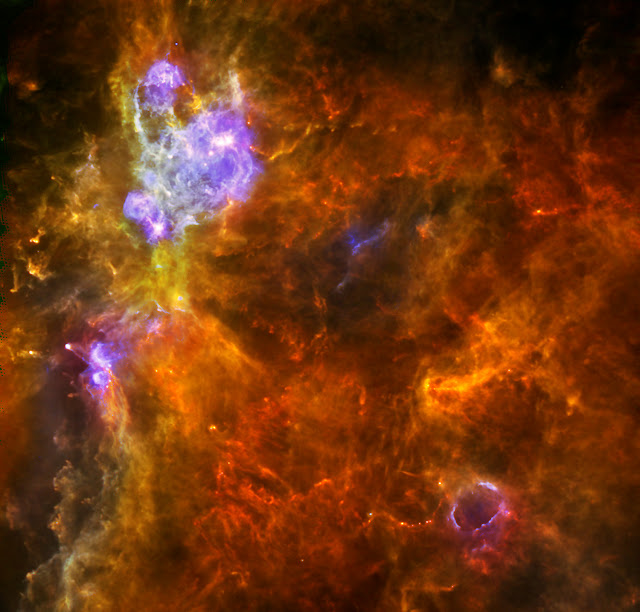Churning Out Stars
W3 is an enormous stellar nursery about 6,200 light-years away in the Perseus Arm, one of the Milky Way galaxy’s main spiral arms, which hosts both low- and high-mass star formation. In this image from the Herschel space observatory, the low-mass forming stars are seen as tiny yellow dots embedded in cool red filaments, while the highest-mass stars - with greater than eight times the mass of our Sun - emit intense radiation, heating up the gas and dust around them and appearing here in blue.
This three-color image of W3 combines Herschel bands at 70 microns (blue), 160 microns (green) and 250 microns (red). The image spans about 2 by 2 degrees. North is up and east is to the left.
Image Credit: ESA/PACS & SPIRE consortia, A. Rivera-Ingraham & P.G. Martin, Univ. Toronto, HOBYS Key Programme (F. Motte)
Explanation from: http://www.nasa.gov/mission_pages/herschel/multimedia/pia16881.html

Comments
Post a Comment